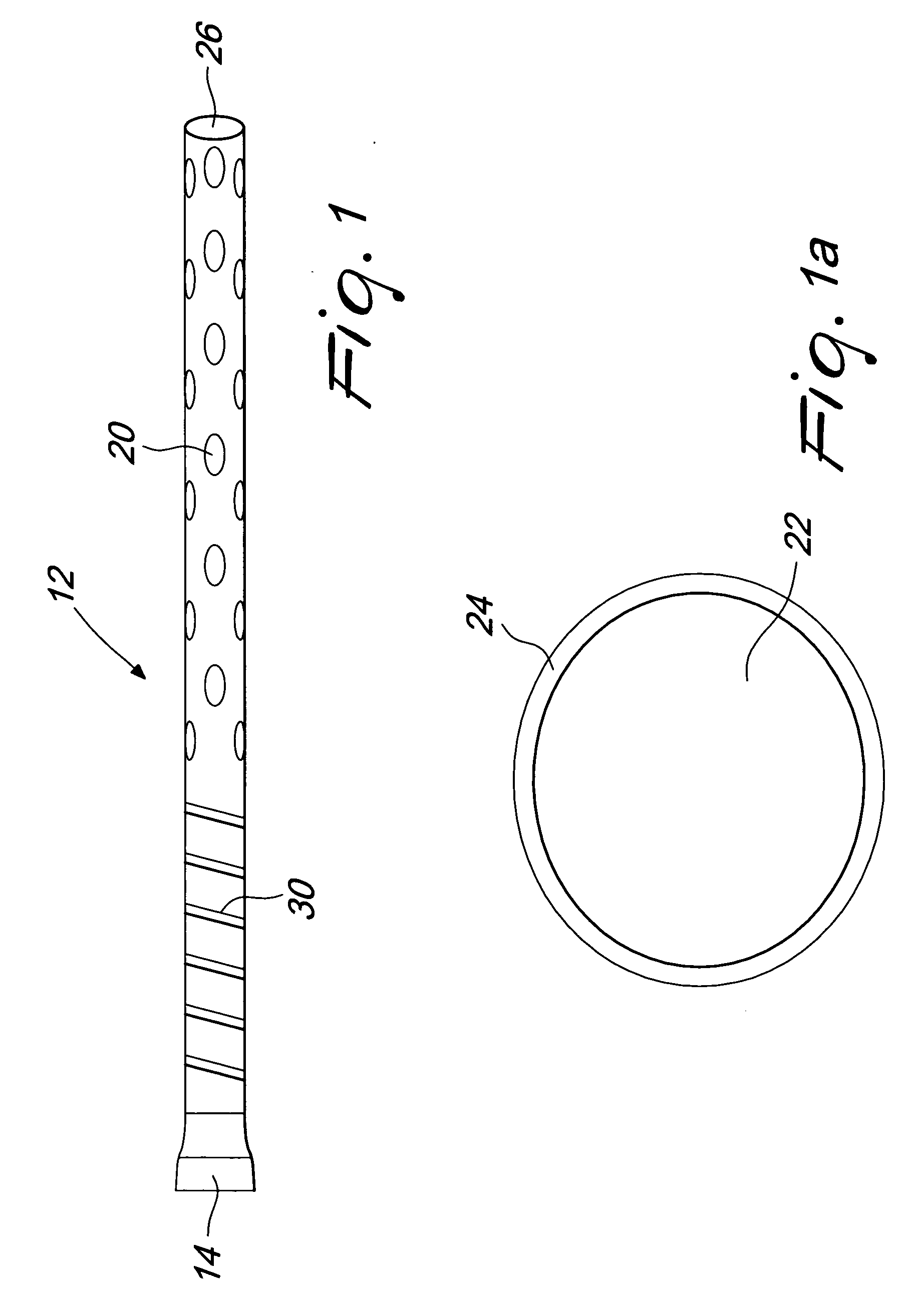Method and apparatus for delayed pericardial drainage
a technology of pericardial drainage and delay, which is applied in the direction of catheters, wound drains, suction devices, etc., can solve the problems of incomplete fluid drainage, cardiac tamponade, and fluid production
- Summary
- Abstract
- Description
- Claims
- Application Information
AI Technical Summary
Benefits of technology
Problems solved by technology
Method used
Image
Examples
Embodiment Construction
[0018]FIG. 1 illustrates a tubing 12 that, along with an internal shaft, forms a cannula 10 of the present invention. The tubing 12 has a proximal end 14 to be connected with an external vacuum or pumping system and a distal end with a plurality of drainage holes 20 and an open ending 26. The tubing 12 preferably comprises a stiffening wire 30.
[0019]FIG. 1a illustrates the cross sectional view of the tubing 12 that comprises a drainage lumen 22 and a wall 24. The tubing material may be selected from any polymer such as, but not limited to, polyvinyl chloride, polyurethane, polyethylene and the like.
[0020] The tube 12 is, preferably, transparent or semitransparent. At least a portion of the tubing 12 is preferably stiffened with a helical winding of material such as stainless steel, nitinol and the like. The stiffening 30 could also be provided using corrugations in the tubing 12 or by addition of a strong polymer such as glass-filled polycarbonate instead of the helical winding. T...
PUM
 Login to View More
Login to View More Abstract
Description
Claims
Application Information
 Login to View More
Login to View More - R&D
- Intellectual Property
- Life Sciences
- Materials
- Tech Scout
- Unparalleled Data Quality
- Higher Quality Content
- 60% Fewer Hallucinations
Browse by: Latest US Patents, China's latest patents, Technical Efficacy Thesaurus, Application Domain, Technology Topic, Popular Technical Reports.
© 2025 PatSnap. All rights reserved.Legal|Privacy policy|Modern Slavery Act Transparency Statement|Sitemap|About US| Contact US: help@patsnap.com



